Welcome to my guide on successful horticulture at home! In this article, I will share easy steps and valuable tips to help you create a lush garden right in your own backyard. Whether you’re a beginner or a seasoned gardener, these steps will help you get started and achieve success with your plants.
Key Takeaways:
- Select plants based on personal preferences and maintenance abilities
- Choose a garden spot with ample sunlight and water access
- Prepare soil by removing weeds and improving its quality
- Test and improve soil for healthy plant growth
- Properly water plants for optimal growth
Choose the Right Plants for Your Preferences and Maintenance Abilities
When starting your horticulture journey at home, it’s essential to consider what types of plants you want to grow based on your preferences and the amount of time and effort you can dedicate to their care. Do you want to cultivate a vegetable garden, herb garden or flower garden? Choose plants that align with your preferences and that your family will enjoy eating or trying.
It’s also important to note that different plants have different maintenance requirements. If you’re new to gardening, start small until you have a better understanding of what you’re getting into.
Next, pick a garden spot that receives at least 6-8 hours of full sun each day for most vegetables and many types of flowering plants. This is crucial for their growth and development. Determine whether your soil needs improvement by conducting a soil test through your county cooperative extension office. Adding organic matter, such as compost, will improve soil quality and drainage.
Before planting, clear the ground of weeds and sod. You can also use the lasagna gardening method by covering the area with newspaper, adding a layer of compost, and waiting for it to decompose. Preparing your planting beds by loosening the soil with a mechanical device or by hand. Mix in organic matter and avoid compacting the soil by using plywood boards to distribute your weight.
Now it’s time to pick your plants. Choose ones adapted to your climate, soil, and sunlight conditions. Starting with easy-to-grow plants for beginners is recommended, such as calendula, cosmos, geraniums, impatiens, marigolds, sunflowers, and zinnias for annuals; black-eyed Susans, daylilies, lamb’s ears, pansies, phlox, purple coneflowers, and Russian sage for perennials; and cucumbers, lettuce, peppers, and tomatoes for vegetables.
Planting should be done at the right time, whether it’s in autumn or late winter for cold-tolerant plants, or after the danger of frost has passed for warm-weather crops. Seeds can be sown directly in the garden or started indoors a few weeks before the last frost date. Young plants can also be transplanted into prepared beds by following tag instructions.
Lastly, watering your plants at the right time is key. Pay attention to their moisture needs and avoid overwatering or underwatering. With these steps, you can choose the right plants for your preferences and maintain a successful garden.

Find the Perfect Garden Spot with Ideal Sunlight and Water Access
The right garden spot is crucial for thriving horticulture at home, whether you have a spacious backyard or limited urban space. When deciding where to plant your garden, start by considering what you want to grow. Do you want to plant vegetables, herbs, or flowers? Choose plants that align with your tastes and preferences.
Most plants require 6-8 hours of full sun per day, so observe your yard to determine the spots with full sun. Take note of any trees or buildings that may cast shadows during different times of the day. Additionally, ensure that your garden has easy access to a water source.
| Tip: | Consider using rain barrels or a drip irrigation system to conserve water and reduce your environmental impact. |
|---|
Before preparing your planting beds, clear the ground of weeds and sod. This will prevent competition for nutrients and ensure that your plants can grow to their fullest potential.
It’s also important to test the soil to understand its pH levels and nutrient makeup. You can have a professional soil test done or use a DIY kit. Depending on the results, amend the soil accordingly to improve its quality.
Plan your garden beds, considering the space and companion plants. Companion planting is the practice of planting different crops together that will benefit each other. For example, planting basil near your tomato plants can help to repel pests and improve the flavor of your tomatoes.
Choose between using seeds or starts based on your climate and experience level. Plant the seeds or starts according to their recommended depth and spacing. Follow the instructions on the seed packet or plant tag to ensure proper growth and development.
Once your garden is established, it’s important to water it at the right time. Water your plants deeply, but avoid overwatering or underwatering. A good rule of thumb is to water your garden when the top inch of soil feels dry to the touch.
By following these tips, you can find the perfect garden spot for your horticulture at home and enjoy a successful and bountiful harvest.
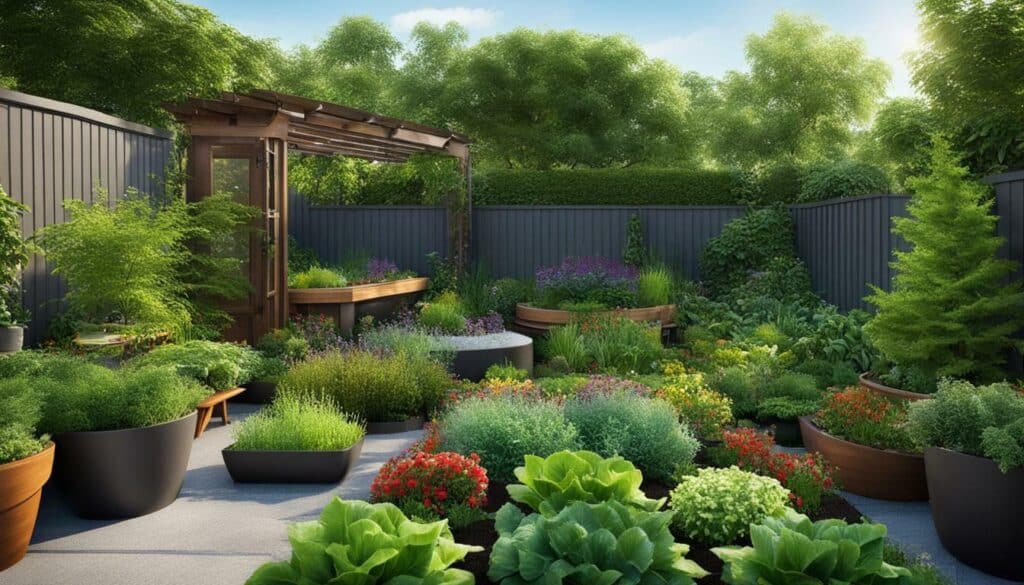
Clear the Ground and Prepare the Soil for Planting
Before planting, it’s essential to clear your garden beds of any weeds or unwanted vegetation and prepare the soil for optimal plant growth. To start, consider what you want to grow and choose plants that are well-suited to your specific climate. Select a spot in your yard that receives at least 6-8 hours of full sun each day and has easy access to water.
To clear the ground, you can either cut out weeds and sod with a sharp spade or use the lasagna gardening method. Lasagna gardening involves layering cardboard or newspaper over the area you want to plant, then adding a layer of compost, followed by a layer of soil. Repeat the process until you reach the desired depth, then wait a few weeks for the layers to break down and create a nutrient-rich planting bed.
| Gardening Techniques: | Sustainable Gardening |
|---|
Once you’ve cleared the ground, it’s important to test your soil’s nutrient levels and pH. You can do this by having a professional soil test done or using a DIY kit. After testing, you’ll want to amend your soil with compost, manure, or other organic matter to improve its fertility and nutrient content. This can also help improve soil structure and water retention.
Preparing your planting beds involves loosening the soil so that plant roots can grow more easily. You can do this by tilling with a mechanical device or using a digging fork to loosen soil by hand. Incorporating organic matter like compost or aged manure will further improve soil structure and nutrient availability.
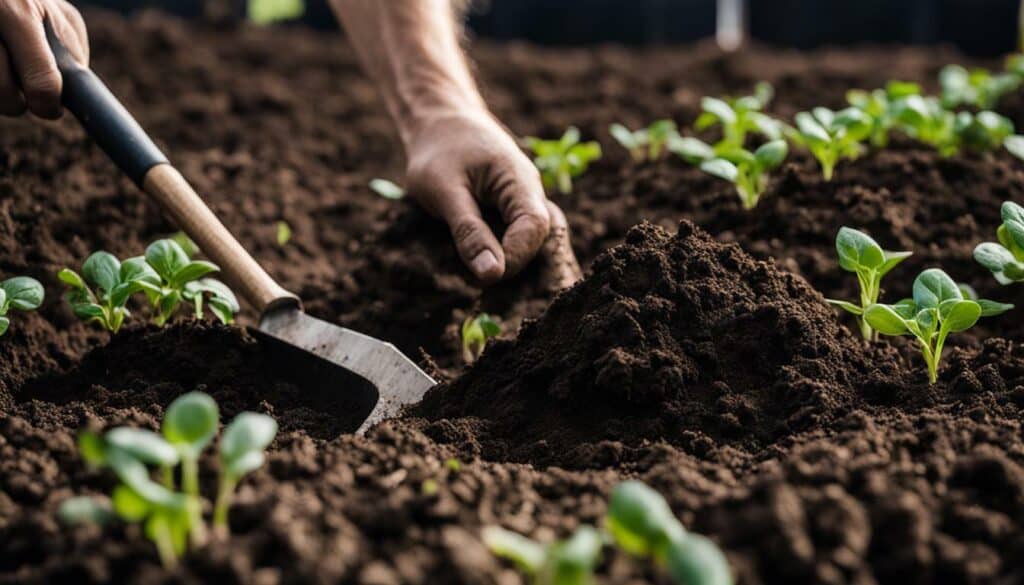
In choosing your plants, either start from seeds or purchase young plants from a local nursery or garden center. Plant according to the instructions on the seed packets or plant tags, be sure to water your plants at the right time and in the right amount. This will ensure proper growth and development. By following these steps, you can clear the ground and prepare the soil for a successful garden.
Test and Improve Your Soil for Healthy Plant Development
To ensure healthy and thriving plants, it’s crucial to test and improve the quality of your soil by checking its nutrient levels and pH balance. Choosing what to plant is important, but so is preparing the soil to support your plants’ growth.
First, find a suitable location for your garden that receives 6-8 hours of full sun. Clear the ground of weeds and sod, loosening the soil and adding organic matter like compost, leaves, and grass clippings. Consider using the lasagna gardening method, layering organic matter and soil to create a nutrient-rich planting bed.
Next, test your soil for nutrient levels and pH using a professional soil test or a DIY kit. This will help you determine what amendments are needed for optimal plant growth. If your soil needs improvement, consider adding organic matter, lime, or other soil amendments to balance the pH and provide essential nutrients.
Prepare your planting beds by loosening the soil and incorporating organic matter. This will improve soil structure and nutrient retention, allowing your plants to thrive. Choose plants that are well-suited to your climate and lighting conditions, such as vegetables, perennials, or annuals.
Whether you’re sowing seeds directly in the ground or transplanting starts, it’s important to water your plants at the right time and in the right amount. Overwatering or underwatering can be detrimental to plant health, so be sure to monitor the soil moisture regularly.
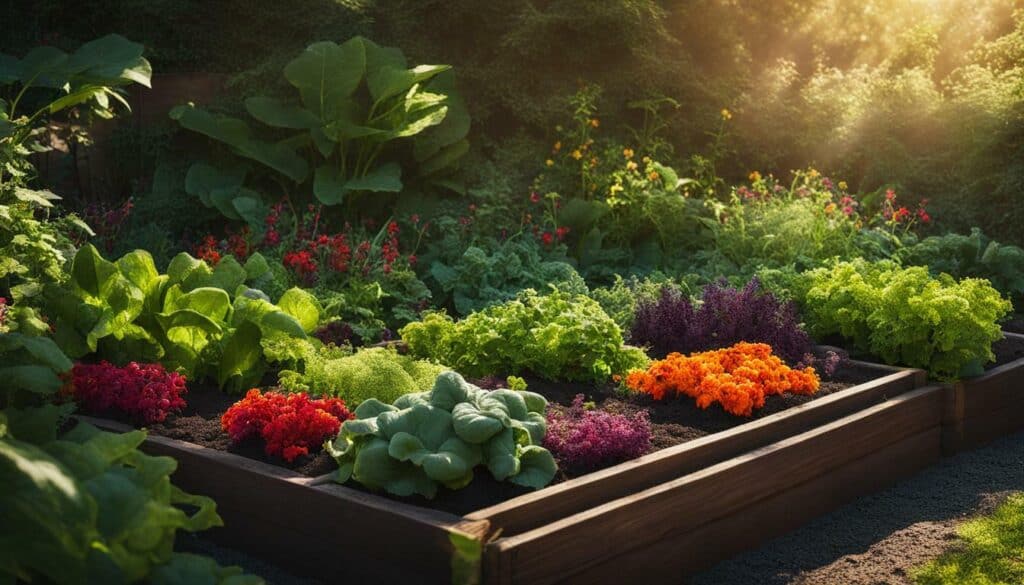
By following these easy steps for successful horticulture at home, you can create a healthy environment for your plants to thrive and grow. With a little patience, preparation, and care, you’ll be enjoying a bountiful harvest in no time.
Prepare Your Planting Beds for Optimal Growth
Properly preparing your planting beds is essential for creating an ideal environment for your plants to thrive. When deciding what to plant, consider the type of plants you want in your garden, such as vegetables, herbs, or flowers. It’s important to choose a spot that receives enough sunlight and has easy access to water. A garden spot that receives 6-8 hours of full sun each day is ideal.
Before planting, clear the ground of weeds and sod by cutting it out or using the lasagna gardening method. The lasagna gardening method involves layering organic materials like leaves, grass clippings, and compost on top of the ground to create a nutrient-rich base for your plants to grow in.
| Step | Description |
|---|---|
| Step 1 | Test Your Soil |
| Step 2 | Improve Your Soil with Organic Matter |
| Step 3 | Loosen Your Soil |
After clearing the ground, test your soil to determine its nutrient levels and pH. You can have a professional soil test done or use a DIY kit available at most garden centers. Once you know what your soil needs, improve it by adding organic matter such as compost or aged manure. This will help to improve soil structure and nutrient retention.
To further prepare your planting beds for optimal growth, loosen the soil by tilling or digging by hand. This will help to improve soil aeration and drainage. Loosening the soil also makes it easier for roots to grow and spread.
When choosing plants for your garden, consider your climate, soil, and sunlight conditions. Choose plants that are well-suited to these conditions for best results. Start planting by sowing seeds directly in the garden or by transplanting young plants. Water your garden at the right time, taking into account the needs of your plants. By following these steps and properly preparing your planting beds, you can ensure that your plants will thrive and grow to their full potential.
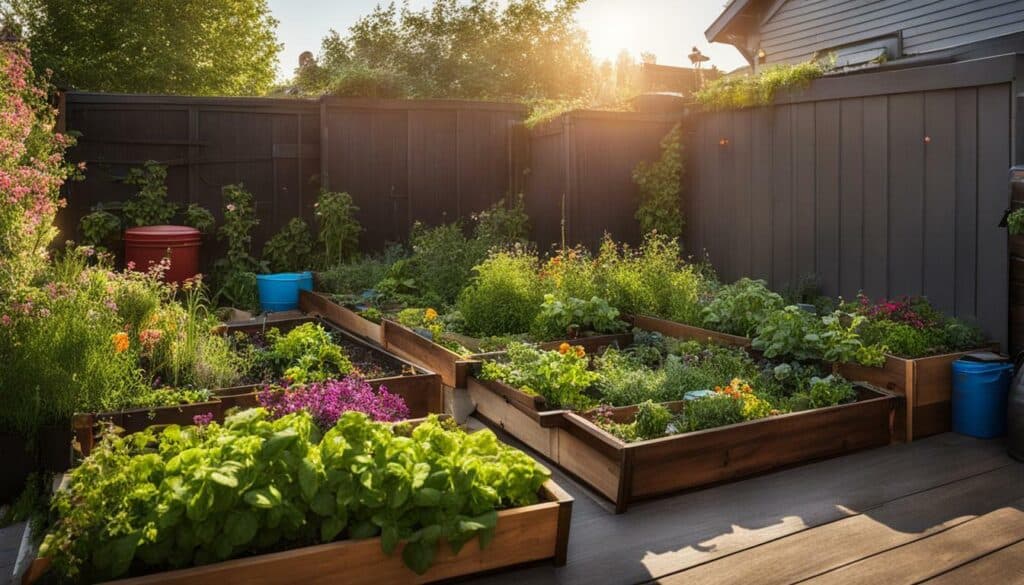
Choose the Right Plants Based on Climate and Sunlight Conditions
When it comes to horticulture at home, choosing the right plants that can adapt to your specific climate and sunlight conditions is key to a successful garden. First, think about what you want to plant, whether it’s vegetables, herbs, or flowers. Different plants have different maintenance requirements, so start small until you have a better understanding of what you’re getting into.
Next, pick a garden spot that receives at least 6-8 hours of full sun each day. Observe your yard to determine which areas receive full sun, partial shade, or full shade. This will give you a better idea of what plants will thrive in each spot. It’s also important to ensure that your garden has easy access to a water source.
Clear the ground by removing weeds and sod, or try the lasagna gardening method which involves covering the ground with newspaper and compost. This will help to suppress weeds and improve soil moisture retention.
Test and improve your soil by having a soil test done through a county cooperative extension office. This will give you an idea of what nutrients your soil may be lacking and how to improve it. Add organic matter to your soil, such as compost, to increase its nutrient levels and improve drainage.
Prepare your planting beds by tilling or digging the soil and mixing in the organic matter. This will help to improve soil structure and promote healthy root growth.
Pick your plants based on their adaptability to your climate, soil, and sunlight conditions. Consider starting with easy-to-grow plants for beginners such as calendula, geraniums, and cucumbers. These plants are relatively low-maintenance and can adapt to a variety of growing conditions.
Start planting according to the recommended planting time for each plant, either by sowing seeds directly in the garden or by transplanting starts. Be sure to follow planting instructions carefully to ensure healthy growth of your plants.
Water your plants at the right time, taking into consideration their specific watering needs. Some plants require more water than others, so it’s important to research each plant’s specific requirements. Overwatering can lead to root rot, while underwatering can cause wilting and stunted growth. Monitor your plants closely to ensure they are getting enough water.
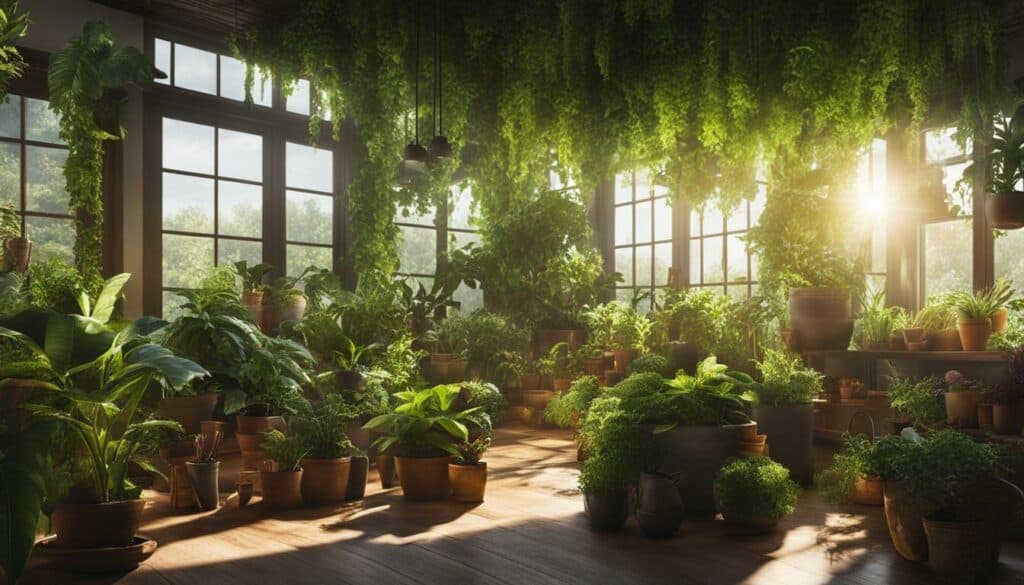
With proper planning and care, you can create a beautiful and thriving garden that adapts to your specific climate and sunlight conditions. By selecting the appropriate plants and providing them with the right growing conditions, you can enjoy the benefits of fresh produce, beautiful flowers, and a healthier outdoor environment.
Start Planting and Establishing Your Garden
Now that your garden beds are ready, it’s finally time to start planting and bringing your horticulture dreams to life! Whether you’re starting from seed or buying young plants, the process of planting is an exciting step in establishing your garden.
Before planting, make sure to carefully read the instructions on the seed packets or plant tags. This will provide vital information on the proper planting depth, spacing, and watering needs for each plant.
When planting, be gentle with the roots and handle them as little as possible to avoid damaging them. Using a trowel or your hands, dig a hole deep enough to accommodate the roots and place the plant in the hole. Firmly pack the soil around the base of the plant to ensure it is stable and upright.
During the first few weeks after planting, it’s important to keep a close eye on your new plants and provide proper care. Water regularly according to the plant’s needs and avoid overwatering or underwatering. If you notice any pests or diseases, take quick action to prevent them from spreading.
As your plants begin to grow, consider using gardening techniques such as staking or pruning to help them thrive. This can ensure proper air circulation and prevent overcrowding, leading to healthier plants and a higher yield.
Remember, successful horticulture at home requires patience and dedication. With proper plant care and gardening techniques, your garden will soon be flourishing and providing you with fresh produce or beautiful blooms.

Proper Watering Techniques for Healthy Plants
Watering your plants correctly is essential for their overall health and growth, so let’s dive into the proper techniques to keep your garden thriving.
The frequency and amount of watering required for your plants depend on various factors such as weather conditions, soil type, and the plant type. A good rule of thumb is to water deeply and less frequently rather than shallowly and often. This helps encourage the roots to grow deeper and stronger, promoting healthier and more drought-resistant plants.
One way to determine whether your plants need watering is to stick your finger into the soil up to your first knuckle. If the soil is dry at this depth, it’s time to water. You can also use a moisture meter to determine the moisture level of your soil.
When watering your plants, it’s crucial to avoid getting water on the leaves. Wet leaves can encourage the growth of fungus and other diseases. Instead, aim the water directly at the soil around the base of the plant.
It’s also essential to ensure that your soil is well-draining so that excess water can escape easily. Poorly draining soil can lead to waterlogged roots, which can cause root rot and ultimately kill your plants.
Consider watering your plants in the morning or late afternoon when the sun isn’t as hot. This helps prevent water evaporation and allows the plants to absorb the water more effectively.
Finally, it’s important not to overwater your plants. Overwatering can be just as harmful as underwatering, as it can suffocate the roots and promote the growth of harmful bacteria and fungus. Always refer to your plant’s specific water requirements to determine the appropriate watering schedule.
Using these proper watering techniques, your plants are sure to thrive and add beauty to your horticulture at home!
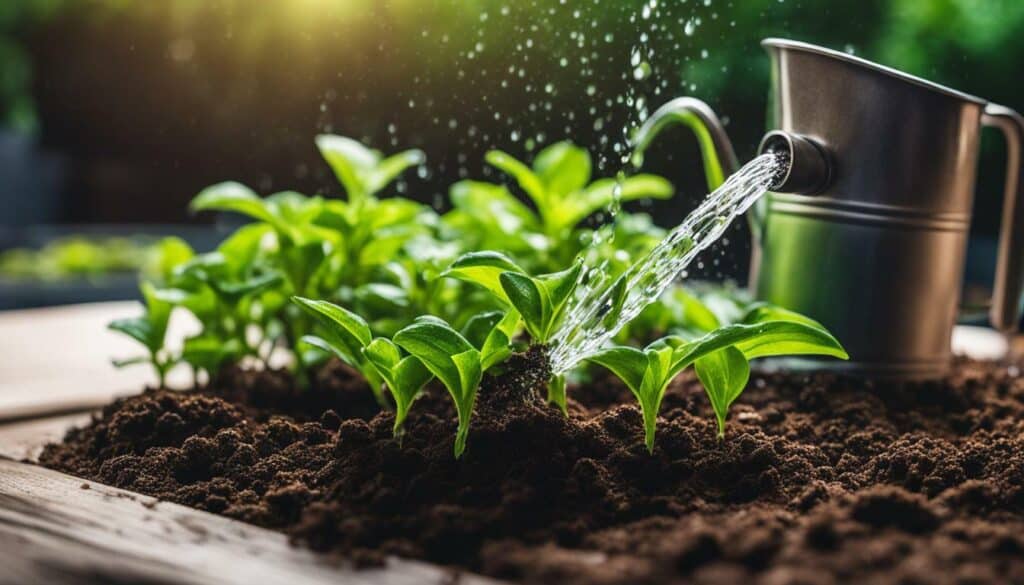
Conclusion
Congratulations on completing this guide to successful horticulture at home – you’ve taken the first steps towards creating your own lush and thriving garden!
Remember, gardening can be a rewarding and fulfilling hobby that provides fresh produce, beautiful flowers, and a connection to the natural world. By following the easy steps outlined in this guide, you can start your garden with confidence. Begin by selecting plants that suit your preferences and maintenance abilities, finding the perfect garden spot with ideal sunlight and water access, clearing and preparing the soil, testing and improving your soil, preparing your planting beds, picking the right plants for the climate, starting your planting, and watering at the right time.
Don’t be afraid to start small and expand your garden gradually as you gain experience. With the right techniques and patience, your garden will thrive and bring you years of enjoyment. Remember to use sustainable and organic gardening practices to ensure the health and well-being of your plants, the environment, and yourself.
Thank you for reading this guide, and we wish you all the best for your journey in horticulture at home!
What are the Easy Steps to Successfully Start a Garden Bed at Home?
Starting a garden bed at home may seem daunting, but with these easy steps, you’ll be on your way to success. First, choose the perfect spot for your garden bed – a location with at least six hours of sunlight is ideal. Next, prepare the soil by removing any weeds and loosening it with a garden fork. Then, enrich the soil with compost or organic matter to promote healthy plant growth. Now, it’s time to outline the garden bed using string or a garden hose. Finally, start planting your desired seeds or seedlings, ensuring proper spacing and watering them regularly. Follow these steps, and you’ll know exactly how to start a garden bed effortlessly.
Are the Steps for Successful Horticulture at Home the Same as Starting a New Garden?
Are the steps for successful horticulture at home the same as starting a new garden? While both activities share some similarities, easy steps for starting a garden differ from those for successful horticulture. Starting a garden involves prepping the soil, selecting plants, and providing proper care. Horticulture entails a broader understanding of plant science, advanced techniques, and maintaining a thriving garden ecosystem.
FAQ
Q: What should I consider when deciding what to plant in my garden?
A: It’s important to take into account your personal preferences and the level of maintenance you can provide. Choose plants that you enjoy and can easily care for.
Q: How do I find the ideal spot for my garden?
A: Look for a location with at least 6-8 hours of full sun per day and easy access to water. This will ensure your plants have the best chance of thriving.
Q: How do I prepare the soil for planting?
A: Start by clearing the ground of weeds and sod. Then, test your soil’s nutrient levels and pH and make any necessary improvements by adding organic matter.
Q: What should I consider when choosing plants for my garden?
A: Take into account your climate and the sunlight conditions in your garden. Select plants that are well-suited to these factors, such as annuals, perennials, or vegetables.
Q: How do I start planting in my garden?
A: You can either sow seeds directly in the ground or buy young plants to transplant. Follow proper planting techniques and provide care during the initial growth stages.
Q: How often should I water my plants?
A: Water your plants at the right time according to their needs. Avoid overwatering or underwatering by paying attention to the moisture level of the soil.
Source Links
- https://www.bhg.com/gardening/yard/garden-care/ten-steps-to-beginning-a-garden/
- https://commonsensehome.com/start-a-garden/
- https://www.wikihow.com/Start-a-Garden
- https://growinginthegarden.com/gardening-for-beginners-how-to-start-a-garden-in-8-simple-steps/
- https://www.ecowatch.com/gardening-tips.html
- https://www.thespruce.com/plant-selection-for-the-landscape-2131865
- https://www.apartmenttherapy.com/choosing-the-right-plants-for-your-space-and-lifestyle-228843
- https://www.forbes.com/sites/forbes-personal-shopper/2022/02/27/best-indoor-plants/?sh=24a9b5c13ad6
- https://sebsnjaesnews.rutgers.edu/2020/04/choosing-the-right-location-for-your-vegetable-garden/
- https://www.almanac.com/where-put-vegetable-garden
- https://growfully.com/perfect-garden-location/
- https://home.howstuffworks.com/gardening/garden-design/how-to-prepare-soil-for-planting.htm
- https://www.southernliving.com/garden/how-to-prepare-garden-soil-for-planting
- https://www.wikihow.com/Prepare-the-Soil-for-a-Vegetable-Garden
- https://extension.umn.edu/managing-soil-and-nutrients/living-soil-healthy-garden
- https://extension.oregonstate.edu/gardening/soil-compost/how-do-i-test-my-garden-soil
- https://extension.psu.edu/practical-tips-for-healthy-soil-in-a-home-garden
- https://www.creativevegetablegardener.com/prepping-spring-garden-beds/
- https://getbusygardening.com/prepare-vegetable-garden-for-planting/
- https://joegardener.com/podcast/raised-bed-gardening-pt-1/
- https://ag.umass.edu/landscape/fact-sheets/right-plant-right-place-plant-selection-guide-for-managed-landscapes
- https://www.nature-and-garden.com/gardening/selecting-plants-climate.html
- https://www.trustbasket.com/blogs/how-to-grow/how-to-select-plants-according-to-your-climate
- https://www.thespruce.com/how-to-start-a-garden-from-scratch-2132778
- https://hort.extension.wisc.edu/articles/best-practices-for-watering-yards-and-gardens/
- https://www.thespruce.com/tips-for-watering-plants-5198467
- https://www.hgtv.com/outdoors/gardens/planting-and-maintenance/the-proper-way-to-water-your-garden
- https://www.ncbi.nlm.nih.gov/pmc/articles/PMC6600618/
- https://growingourown.wordpress.com/6-conclusion/
- https://agricultureandfoodsecurity.biomedcentral.com/articles/10.1186/2048-7010-2-8

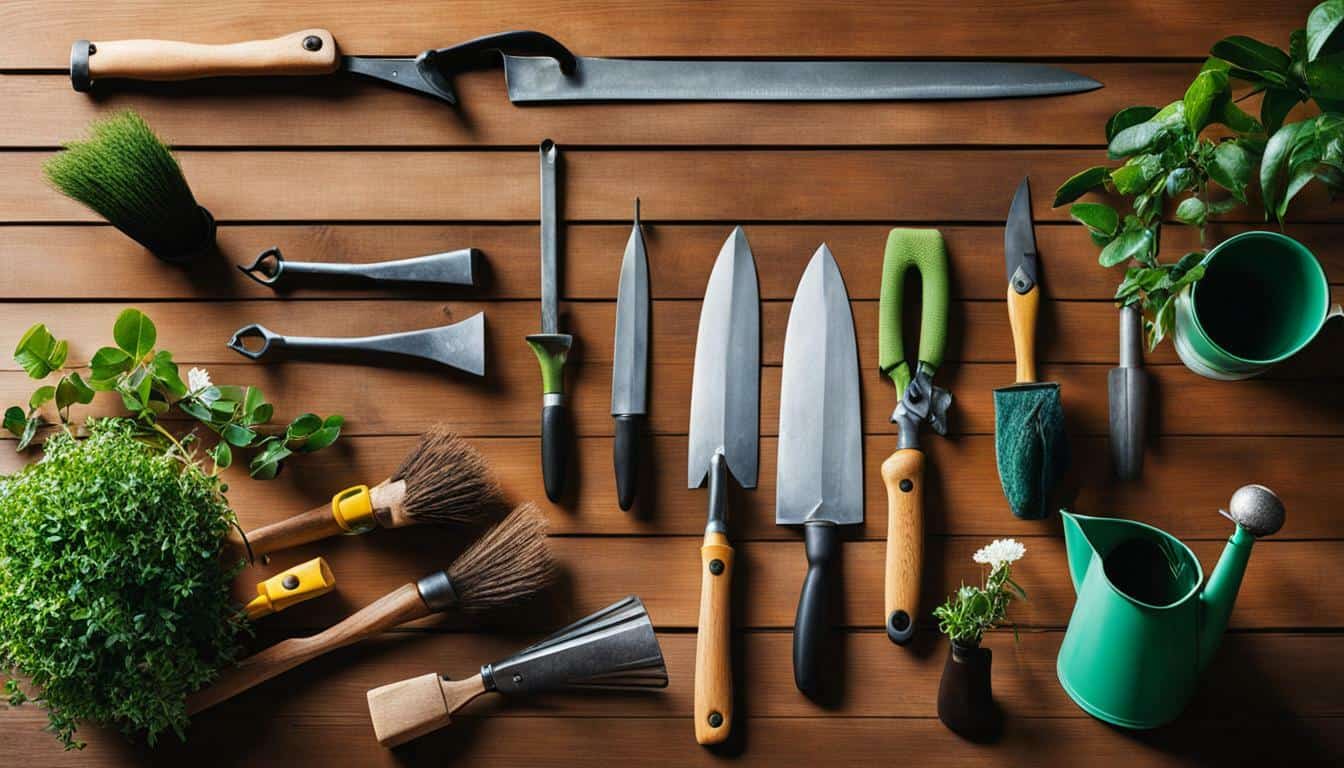



Leave a Reply